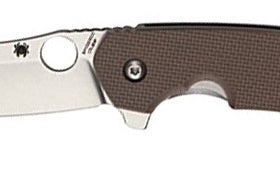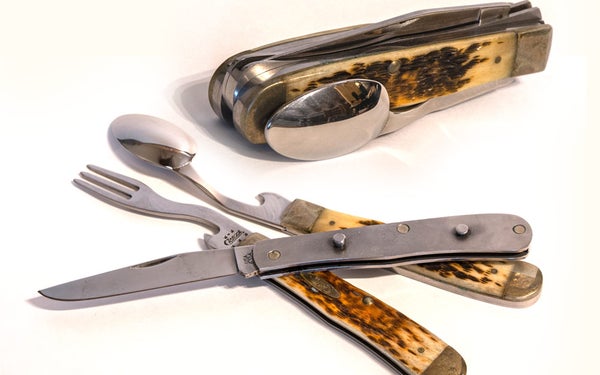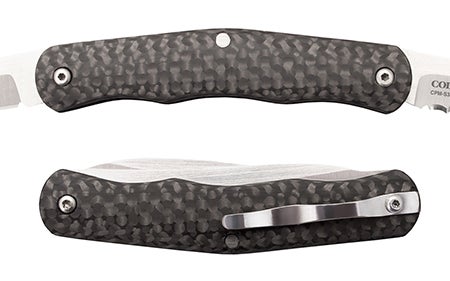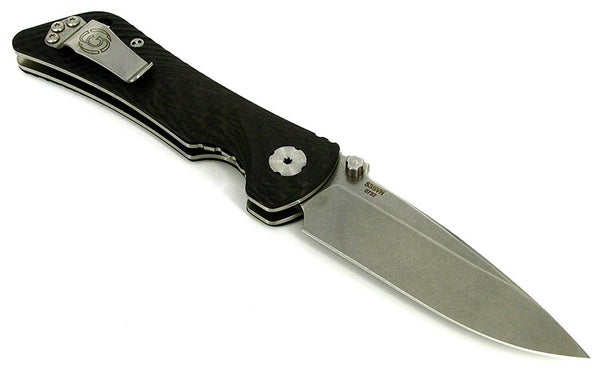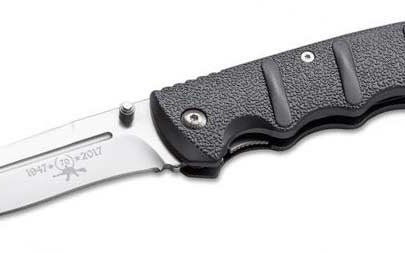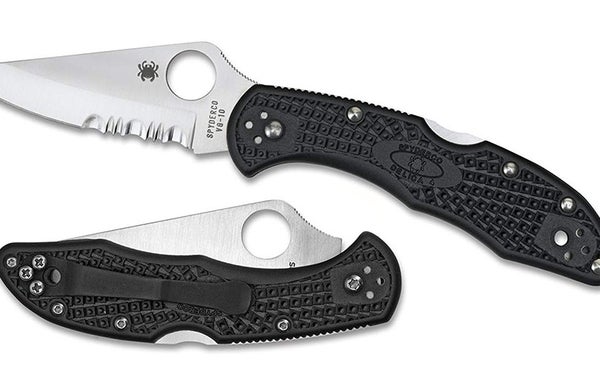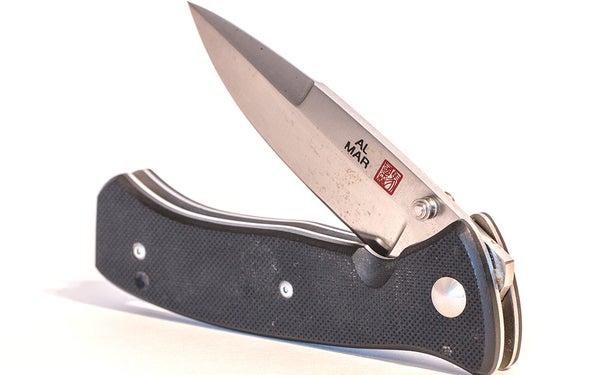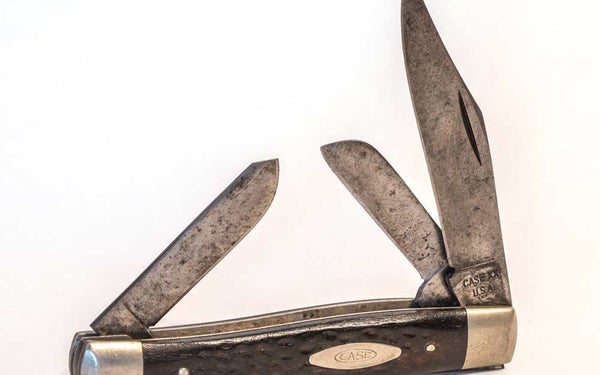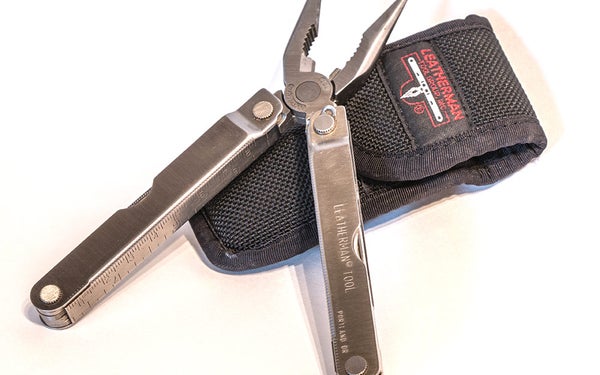The 10 Best EDC Knives
What you need in an everyday-carry knife depends on what you do every day. Here are the author’s favorite models

We may earn revenue from the products available on this page and participate in affiliate programs. Learn more ›
Contrary to what knife-control proponent Sadiq Khan, the Mayor of London, tweeted earlier this year, there is always a good reason to carry a knife. My grandfather gave me a Barlow pocketknife long before I’d ever kissed a girl, and I’ve had a knife in my pocket ever since. Not a day goes by when I don’t find a good reason to use it.
There’s a lot to consider when selecting an everyday-carry (EDC) knife—mostly, the things you do every day. The needs of sportsmen, woodsmen, and other people of a rugged nature vary. This means that the best knife for you may look very different from the best one for your buddy.
What to Look for in an EDC Knife
The blade the lives in your pocket every day should be compatible with the things you’ll be asking it to do. Here’s some things to consider when selecting a good EDC knife.
Fixed or Folder?
Fixed blade knives are generally more robust and durable but require a sheath. Folders—especially those with pocket clips—are easier to carry. They can also offer multi-blade versatility. For the MacGyvers among us, a multi-tool is the Holy Grail of EDC.
Size
For discreet/formal carry, avoid folders with a closed length longer than 3.5-inches and knives thicker than a half-inch. About the largest folder you’d want to frequently carry for routine field use/chores should have a closed length of no more than 5-inches and be no thicker than three-quarters of an inch. Comparably, even the smallest fixed blade suitable for EDC will be more than seven inches long.
Steel
The harder a blade is to sharpen, the longer it holds an edge. If you use a knife a lot, you’ll want a reasonably hard steel—something in the 58-60 HRC (Rockwell C) like S90V—that offers a good balance. Corrosion resistance is another consideration, particularly for those who live and work around water or the ocean. Carbon steels does not fare well is these environments, so consider a stainless steel with at least an 11% Chromium content, or something like D2 or H1 steel.
Grips
Bone and antler handles/scales are sexy but won’t wear like steels or synthetics. For optimum ruggedness consider grip steels like titanium or aluminum, or synthetics like micarta, Kraton, or G10. Avoid fancy wood or mother of pearl scales unless you’re a CEO or a pimp.
The 10 Best EDC Knives
Here are 10 EDC knives London won’t like, but that you should consider. Their recommendation is not offered on idle speculation; I’ve used them all—a lot. Damn, I’m glad we won the Revolution.
After nearly half a century of carrying scores of EDC knives, the Spyderco Southard Folder is my favorite. The Carson flipper makes it easy to open with one hand, the G-10 handle is indestructible, the Reeve Integral Lock with titanium scale is foolproof, and the clip enables the preferred tip-up, edge-forward, carry method. CTS204P steel provides a nice balance of sharpening ease and edge retention, and I’ve used this knife for everything from skinning a kudu to working on a Jeep.
The Case Hobo, closed (top) and separated into knife, fork, and spoon. Richard Mann
One thing all outdoorsmen do every day is eat, and that’s why the Case Hobo might be the perfect wilderness hunting or camping knife—because it separates into the three essential eating tools: a knife, a fork, and a spoon. Beanie weenies or Snack Pack pudding cups by the campfire are no challenge for the Hobo. I’ve also used mine to skin a woodland caribou. Don’t sit around a campfire or hop on a train without one.
Not everyone needs to carry a knife like Crocodile Dundee’s. For everyday business or casual carry, a bit more sophistication is in order. Cold Steel’s Lucky is a gentlemen’s knife. It’s slim, trim, weighs only 1.2 ounces, has two blades—one smooth and one serrated—made of S35VN steel, and a pocket clip. It’s just right for cleaning fingernails, opening letters, or for field dressing a rabbit or pheasant. One gentlemen I know calls it “as useful as a four-way lug wrench.”
I was a Southern Grind junky for a time, and I carried their Bad Monkey until my African PH begged me out of it. I then switched to the smaller Spider Monkey for about a year and came to really like its compact size, its short-but-robust pocket clip, and how well the S35VN steel holds an edge. The 6AL4V titanium liner lock will hold up to anything you can dish out, and the carbon-fiber handles look cool. It’s not cheap, but the good ones never are.
Knives make good man gifts. One of my most cherished is a well-used Moore Maker 5106LB, given to me by former Texas Sheriff Jim Wilson. Though a tad big for everyday pocket carry, it’s not too big for everyday chores done by men who live on a farm or work outside. Moore Maker knives are made in Texas, they’re affordable, and they’re a staple with real cowboys and ranch hands in west Texas. The 5106LB is no longer made, but the 5105BLB is similar and a bargain for what you get.
I picked up a Boker Kalashnikov automatic knife when I was still a cop and carried it until I darn-near wore it out. That took a while, even though I used that knife like I’d borrowed it from one of my wife’s high-school boyfriends. In Africa, it once saved me from an overly aggressive warthog that was unimpressed with the 174-grain .303 caliber bullet I’d poked through his midsection. That Kalashnikov remains the best money I’ve ever spent on a knife, and I still smile when I push the button and that AUS-8 stainless steel blade swings out.
Spyderco’s patented one-hand-opening hole in the blade sets their knives apart, and once saved a friend’s life when he found himself trapped under water with his shirt-sleeve entangled in the prop of his outboard motor. With his one free hand, he swung his Spyderco open and cut himself free. The Delica, which comes in a variety of styles with plain and/or serrated blades, is one of the company’s best sellers because it’s sized and configured just right for everyday carry. I’ve done about everything you can do with a knife—short of heart surgery—with a Delica.
Originally designed by Al Mar and Colonel Nick Rowe for the U.S. Army’s Survival, Evasion, Resistance, and Escape (SERE) School, the Al Mar Mini SERE 2000 features pillar construction, dual thumb studs, and a reversible, deep pocket clip for discrete carry. It weighs 3.5 ounces, has a 3-inch VG-10 blade, and G-10 scales available in black, digital camo, or olive. As one the best-built and toughest tactical folders you can buy, the Mini SERE is pricey—but it will last a lifetime.
The author’s Stockman, originally carried every day by his grandfather. Richard Mann
The Case Stockman is a real-man’s knife. I know this because it was the knife my grandfather carried every day. I still own it, and though it’s as old as Dave Petzal, it’s still a viable contender for daily carry. Grandpa used it for slicing apples, skinning raccoons, castrating sheep, and some things knives were never intended for. Available in three sizes and dozens of styles, the Stockman has three blades that allow you to dedicate a specific edge to a specific chore, and it’s very affordable. If you don’t carry a Stockman, at least have one in your truck.
It’s not ideal for pocket carry, but in locations where a belt sheath is not considered politically incorrect, few things are as handy as a Leatherman. Modern versions are offered with enough specialized tools to work on a nuclear submarine, making most Leathermans more like toolboxes. The original Personal Survival Tool (PST) is a better option for everyday carry, but it has been discontinued. A collector’s edition is available, but you can find the originals online for much less. When you find some on sale, buy them all; you can thank me later.
